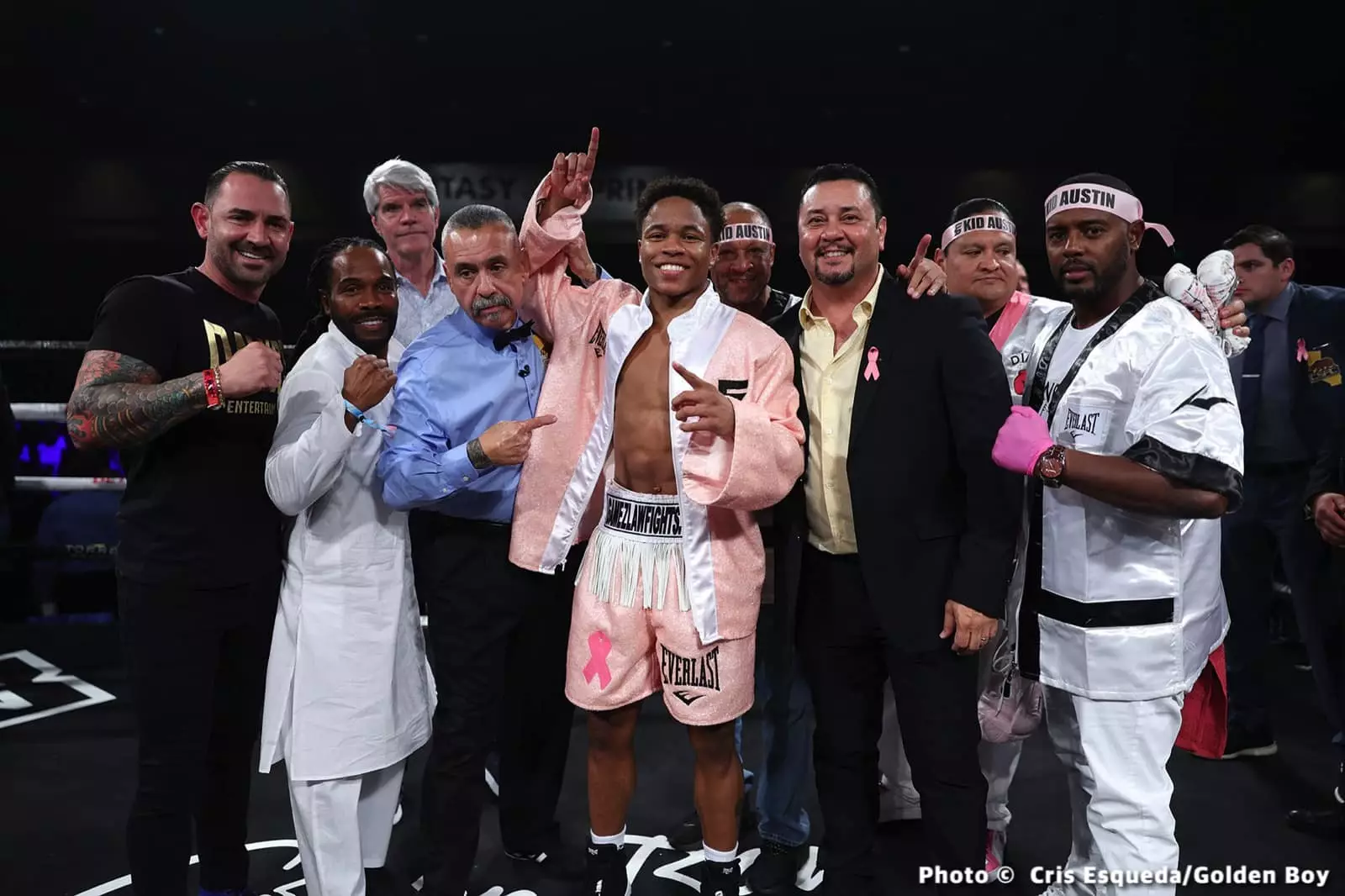In the competitive realm of professional boxing, promotional matchups often spark discussions around strategy, talent, and marketability. The recent saga involving Golden Boy Promotions leader Oscar De La Hoya and rising prospect Floyd Schofield concerning a potential bout with WBC lightweight champion Shakur Stevenson has thrown the spotlight on issues of matchmaking ethics and career management in the sport.
Oscar De La Hoya, a prominent figure in boxing history, has unequivocally rejected the scenario of his young fighter Floyd Schofield stepping up to challenge Shakur Stevenson in a high-stakes match set for February 22 in Riyadh. This rejection comes amidst speculation surrounding the bout’s legitimacy, largely driven by Schofield’s inexperience compared to the accomplished Stevenson, who boasts an impressive record of 22 wins, 10 of which came by knockout. De La Hoya has voiced vehement criticism of Stevenson’s promoter, Eddie Hearn, suggesting that rather than opting for an emerging talent like Schofield (who holds an undefeated record of 18-0, with 12 KOs), Hearn should focus on securing fights with more seasoned contenders.
The contrasting approaches of De La Hoya and Hearn highlight a fundamental disagreement about fighter development. While Hearn seemingly pushes Stevenson towards less qualified challengers, De La Hoya emphasizes the need for proper career trajectory and development for younger fighters, implying that throwing Schofield into the ring against Stevenson could jeopardize his career.
The boxing community reacted negatively to the proposed fight, perceiving it as a lopsided mismatch that would not serve Schofield’s career positively. Many fans argued that the sheer talent and experience held by Stevenson, a silver medalist from the 2016 Olympics, would render Schofield’s chances of success alarmingly low. If Schofield were to lose, it could potentially stem the momentum he has built steadily since turning pro. Even with substantial financial incentives, such a bout might be an ill-advised move for Schofield, who is currently ranked #2 by the WBA and is poised to face another formidable opponent, Gervonta “Tank” Davis, for a title shot that could provide both financial reward and increased stature.
De La Hoya’s comments on the matter further emphasize this concern. Accusations sent in Hearn’s direction suggest an oversight in strategy, as De La Hoya insists that Stevenson’s focus should be directed toward fighting established champions rather than potential future stars with little experience. His frustration with Hearn’s promotional strategy underscores a larger debate within boxing about the paths young fighters should take in pursuing championship aspirations.
In light of De La Hoya’s dismissal, Shakur Stevenson himself has expressed disappointment at the thought of not battling the promising Schofield. His tweets hint at a frustration not only with the situation but also with how the dynamics of promotion and fight planning are evolving. The situation poses questions about Stevenson’s intentions and readiness, particularly concerning a potential rematch with Edwin De Los Santos, which had proven challenging for him last year.
It raises an important consideration: having conquered tough competition, is Stevenson genuinely ready to face another elite fighter, or is he hesitant due to uncertainties from past performances? Conversely, how baffling is it that a high-potential match of this nature was even considered, only for it to unravel in the public eye?
The complexities of boxing extend far beyond mere talent; they encompass critical decision-making and the intricacies of fighter promotion. As we contemplate Stevenson’s future pathway and Schofield’s potential, one must appreciate the overarching philosophy: a solid foundation is essential for building a successful career in boxing. With the stakes of engagement only rising in this elite sport, De La Hoya’s warning stands resolute: mismatches not only harm prospects but also indicate a troubling trend in how undefeated fighters are prepared for leadership roles in boxing.

